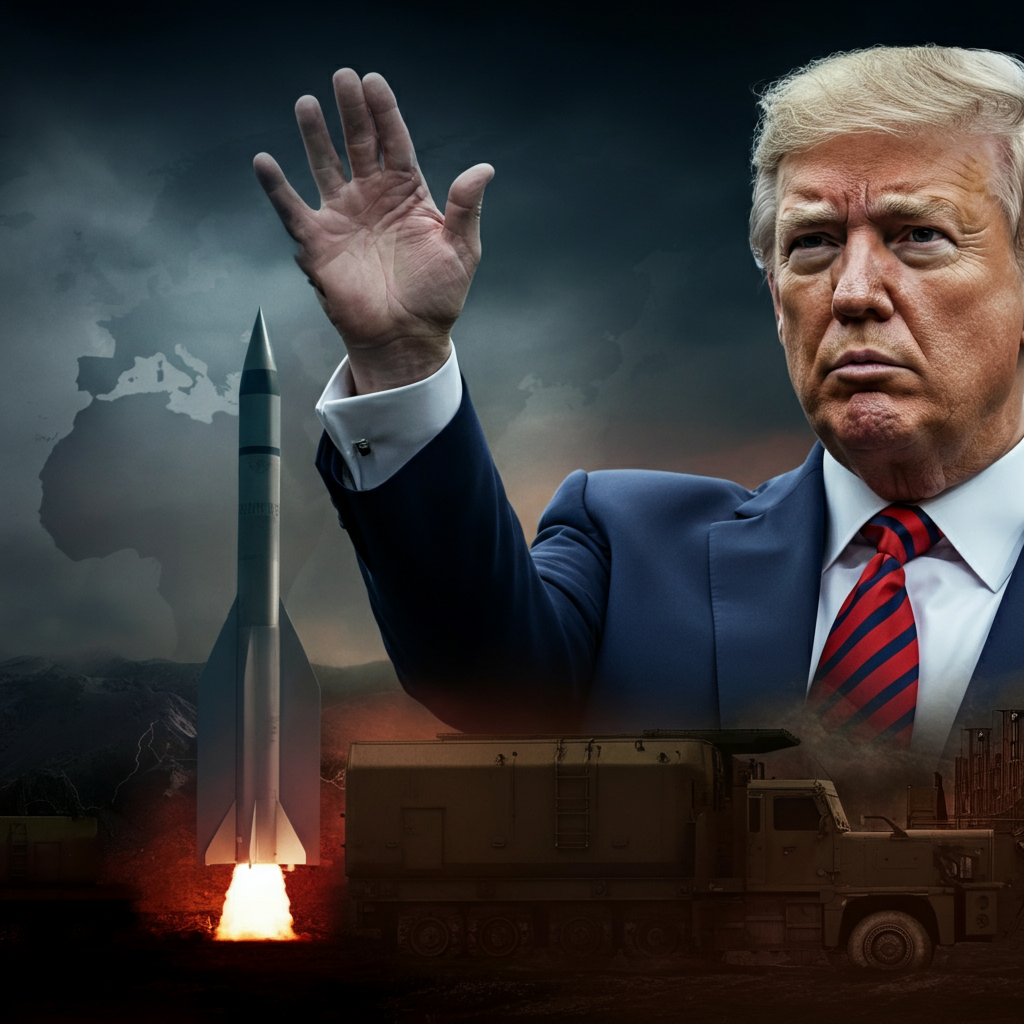In a bold and abrupt move, President Donald Trump announced that the United States will begin nuclear weapons trials after Russia’s recent tests. The order follows Moscow’s public display of advanced nuclear-capable systems, and signals a breakdown of the decades-old U.S. norm of refraining from nuclear detonations.
From a strategic standpoint, this marks a major pivot. For more than 30 years the U.S. has observed a voluntary ban on live nuclear testing. Now, amid growing nuclear competition, Trump has instructed the Pentagon—and by extension, the U.S. military—to restart testing on an “equal basis” with rival powers.
Here’s what the announcement means, why it matters, and where we go from here.
Why the shift?
The immediate trigger is Russia’s own tests of new nuclear-capable systems. Moscow recently confirmed a successful trial of a nuclear-powered cruise missile and an underwater drone, escalating concerns about a new arms race.
Trump’s message was blunt: “Because of other countries’ testing programs, I have instructed the Department of War to start testing our Nuclear Weapons on an equal basis.” Essentially, this is a statement of parity—if Russia and China test, the U.S. will too.
It also reflects skepticism that unilateral restraint serves U.S. interests when adversaries may not be reciprocating. The decision underscores a belief that deterrence is tied to demonstrated capability, not just words.
What hasn’t been said—yet
While Trump’s directive is clear in intent, many details remain murky. The public announcements do not specify what kind of tests will occur, when, or where. Will these be underground detonations, sub-kiloton experiments, or full-scale warhead tests? The lack of clarity is deliberate but leaves room for uncertainty.
Also, how this interacts with international treaties matters. The U.S. signed but never ratified the Comprehensive Nuclear‑Test‑Ban Treaty (CTBT). Russia withdrew its ratification. Resuming tests may violate longstanding norms but not legally bind the U.S. to the CTBT.
Immediate implications
- Global Arms Race Risk — This decision signals to Russia and China that the U.S. is willing to match them test for test. That increases incentives for all parties to escalate.
- Alliance & Diplomacy Impact — U.S. allies who favour nuclear-restraint may view this as destabilising. On the other hand, countries feeling threatened may welcome a stronger U.S. posture.
- Strategic Messaging — By publicly calling out Russia’s recent tests and then ordering U.S. trials, Trump is sending a hard message: the U.S. will no longer allow a perceived technical or strategic gap.
- Technical & Safety Concerns — Resuming nuclear trials involves massive logistical, technical and environmental challenges. Testing sites, instrumentation, and safety protocols must all be revived after decades of dormancy.
Long-term consequences to watch
- Verification & Monitoring: Other nuclear states will have heightened interest in monitoring U.S. tests—and U.S. will be under scrutiny. Hard data and transparency will matter.
- Nuclear Strategy Redefined: If testing resumes, the basis of U.S. nuclear doctrine may shift. Deterrence might become more about demonstration than simply possession.
- Norms Erosion: One of the most important outcomes may be the weakening of the global norm against nuclear explosions. This could open the door to more frequent tests across multiple nations.
- Arms Control Setbacks: Treaties and agreements premised on mutual restraint may unravel as testing resumes. Efforts at negotiations may require new frameworks.
What about Russia’s role?
Russia’s tests changed the equation. Moscow’s announcements of trials for systems like a nuclear-powered cruise missile and a nuclear-capable under-sea drone raised concerns about a new strategic threshold.
Trump’s response can be viewed as reactive: an acknowledgment that Russia is pushing the envelope, and the U.S. must respond to maintain deterrence and credibility. At the same time, critics might argue the U.S. is legitimising the arms race rather than controlling it.
Why does this matter for you (the reader)?
Even if you’re not a defense analyst, this decision impacts global security—and in turn, economic stability, energy markets, and geopolitical risk. A renewed nuclear-testing era can raise uncertainty in financial markets, shift trade routes, impact defence budgets, and force governments to revisit strategic alliances.
For everyday citizens: the prospect of rising tensions means higher stakes for diplomacy, escalated military readiness, and potentially more public debate about national security priorities.
Final take
The order by President Trump to begin nuclear weapons trials after Russia tests is a bold strategic statement. It flips decades of U.S. policy on its head and re-sets the pace of nuclear competition. While many details remain unclear, the message is unambiguous: the U.S. will not sit passively while rivals test nuclear options.
Still, with great risk comes great responsibility. How the U.S. manages this shift—ensuring safety, maintaining transparency, engaging allies, and rethinking arms control—will determine whether this becomes a stabilising move or the opening act of a new nuclear era.
Frequently Asked Questions
Q1: What exactly did Trump order?
He instructed the U.S. military to immediately resume testing nuclear weapons, effectively ending a three-decade moratorium.
Q2: Why is Russia’s testing relevant?
Russia recently announced trials of advanced nuclear-capable systems—such as a nuclear-powered cruise missile—that raised alarms about strategic balance.
Q3: Is the U.S. violating any treaty with this move?
Not strictly. The U.S. signed but never ratified the CTBT, and Russia withdrew its ratification. So while the move erodes norms, it may not legally breach treaty obligations.
Q4: Does this mean we will see atmospheric nuclear tests?
That is not clear. The announcement did not specify test environments or yields. It may be underground, or involve other forms of nuclear testing.
Q5: How will allies react to this shift?
Reactions may vary. Some allies may welcome a stronger U.S. posture; others may worry about destabilisation or being drawn into tensions. Diplomatic outreach will matter.
Q6: What might be the first tangible outcome of this policy?
In practice, revival of test-site infrastructure, instrumentation, and military-scientific readiness is likely. We may see announcements of specific test schedules, although officially these may be closely held.


